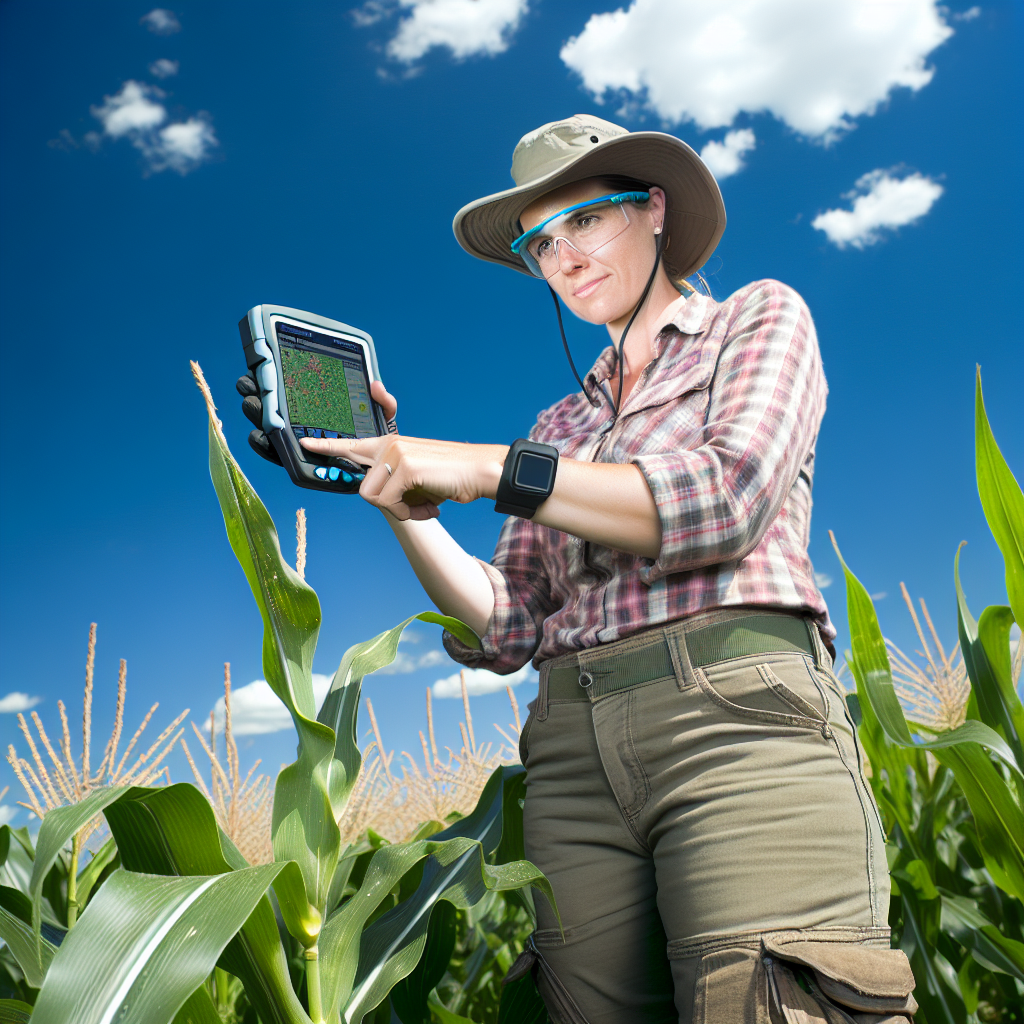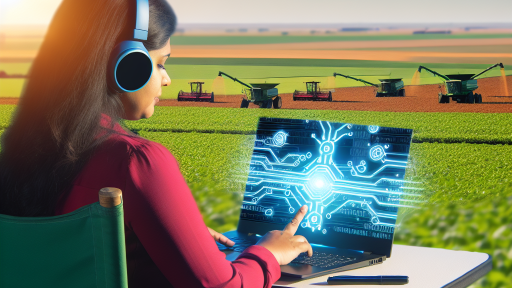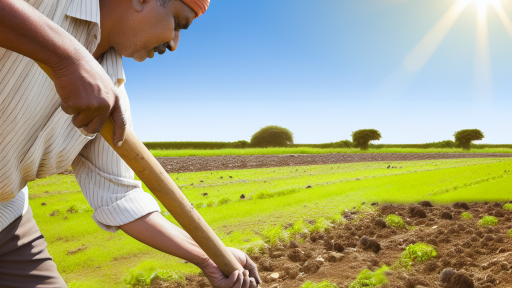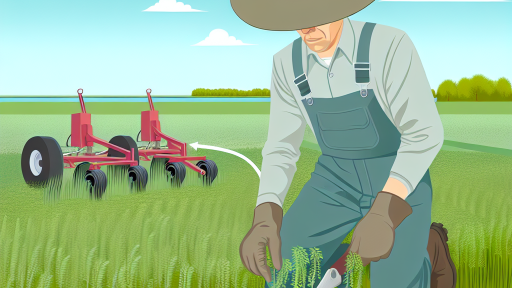Introduction to Crop Protection Strategies and Their Importance
Crop protection strategies play a vital role in modern agriculture.
Farmers utilize these strategies to safeguard their crops from various threats.
These threats include pests, diseases, and weeds that can reduce yield.
Effective crop protection ensures food security for growing populations.
Moreover, it contributes to sustainable practices within the agricultural sector.
Understanding Crop Threats
Crops face numerous biological and environmental challenges.
Pests can damage crops by feeding on leaves, stems, and roots.
Disease pathogens, such as fungi and bacteria, can devastate harvests.
Additionally, weeds compete for essential nutrients and water.
Identifying these threats is crucial for implementing protective measures.
Benefits of Crop Protection Strategies
Implementing effective crop protection strategies offers multiple advantages.
- Increased agricultural productivity and profitability.
- Enhanced quality of food products with fewer defects.
- Reduction in crop losses due to disease and pests.
- Promotion of environmental sustainability through reduced chemical use.
The Role of Disease Forecasting
Disease forecasting provides farmers with critical information.
This method allows for the prediction of potential disease outbreaks.
By understanding the conditions that favor disease development, farmers can act proactively.
Utilizing forecasting tools enhances the timing of interventions.
Transform Your Agribusiness
Unlock your farm's potential with expert advice tailored to your needs. Get actionable steps that drive real results.
Get StartedConsequently, this leads to more efficient use of resources.
Technological Advances in Crop Protection
Recent technological innovations significantly enhance crop protection efforts.
Remote sensing technology assists in monitoring crop health.
Drones can assess field conditions and identify problem areas.
Furthermore, data analytics provide insights for improved decision-making.
Farm management software supports strategic planning and implementation.
Overview of Disease Forecasting in Agriculture
Introduction to Disease Forecasting
Disease forecasting predicts agricultural diseases using environmental and biological data.
This approach allows farmers to make informed decisions.
Furthermore, it helps minimize crop damage and reduce chemical use.
The Importance of Disease Forecasting
Disease forecasting is crucial for sustainable agriculture.
It enhances crop management and reduces yield losses.
Additionally, it optimizes resource usage and improves profitability.
Methods of Disease Forecasting
Several methods are available for accurate disease forecasting.
- Weather-based models use climatic data to predict disease outbreaks.
- Data-driven models analyze historical data for pattern recognition.
- Pathogen monitoring involves field observations and laboratory analysis.
The Role of Technology
Technology plays a significant part in modern disease forecasting.
Remote sensing tools help monitor crop health effectively.
Mobile applications provide real-time alerts to farmers.
Moreover, machine learning algorithms enhance predictive accuracy.
Case Studies of Successful Implementation
Successful implementations showcase the effectiveness of disease forecasting.
In California, a wheat disease forecasting system reduced infection rates significantly.
Similarly, a program in Florida improved yield in citrus crops.
These examples illustrate the benefits of timely interventions.
Challenges in Disease Forecasting
Despite advancements, challenges remain in disease forecasting.
Data accessibility can hinder effective implementation.
Furthermore, farmers may lack the necessary training to use these tools.
Showcase Your Farming Business
Publish your professional farming services profile on our blog for a one-time fee of $200 and reach a dedicated audience of farmers and agribusiness owners.
Publish Your ProfileCollaboration between experts and farmers can address these issues.
Future Directions
The future of disease forecasting looks promising.
Research will likely lead to improved models and techniques.
Integrating genetic data with environmental factors will enhance predictions.
Further advancements can lead to more sustainable agricultural practices.
Key Technologies Used in Disease Forecasting
Introduction to Disease Forecasting
Disease forecasting harnesses technology to predict agricultural threats.
Farmers can make informed decisions based on these predictions.
Moreover, accurate forecasting can drastically reduce crop losses.
Remote Sensing
Remote sensing uses satellite imagery to monitor crop health.
This technology helps detect early signs of disease outbreaks.
Additionally, it provides insights into environmental conditions.
Farmers can leverage this data for timely interventions.
Predictive Modeling
Predictive modeling combines data analysis and historical trends.
This approach identifies patterns that indicate potential diseases.
By using weather data, soil conditions, and pest populations, models can forecast risks effectively.
Consequently, farmers can implement preventive measures.
Drones in Agriculture
Drones are becoming essential tools for precision agriculture.
They offer high-resolution aerial imagery of fields.
With drone technology, farmers can monitor plant health continuously.
This enables quick responses to emerging threats.
Mobile Applications
Mobile applications facilitate immediate access to disease forecasts.
Farmers can receive real-time alerts and recommendations.
These apps often use data collected from various sources.
This ensures that farmers stay updated on possible threats.
Decision Support Systems
Decision Support Systems (DSS) integrate multiple data sources for analysis.
These systems provide actionable insights tailored to specific crops.
Farmers can utilize DSS to assess risks and enhance productivity.
Furthermore, they streamline communication between stakeholders.
Future Directions in Agricultural Disease Forecasting
Adopting these technologies will shape the future of agriculture.
Improvements in disease forecasting can lead to sustainable practices.
Ultimately, this influences the global food supply positively.
See Related Content: Climate Control for Aquaponic Operations
Types of Crop Diseases and Their Impact on Yield
Major Categories of Crop Diseases
Crop diseases fall into several major categories.
Fungal diseases often pose the most significant threat to crops.
Bacterial diseases can also lead to substantial crop losses.
Viral diseases spread quickly and affect plant health dramatically.
Moreover, nematodes, which are microscopic worms, can damage roots extensively.
Fungal Diseases
Fungal diseases include well-known issues like rust and blight.
Rust causes yellow or reddish-orange spores on plants.
Blight leads to rapid decay and discoloration of leaves.
Showcase Your Farming Business
Publish your professional farming services profile on our blog for a one-time fee of $200 and reach a dedicated audience of farmers and agribusiness owners.
Publish Your ProfileThese diseases can drastically reduce crop yields.
Effective management includes crop rotation and resistant varieties.
Bacterial Diseases
Bacterial diseases manifest as leaf spots and wilts.
They often thrive in warm, moist conditions.
Infected plants usually exhibit stunted growth and poor fruiting.
Controlling these diseases requires sanitation and resistant strains.
Viral Diseases
Viral diseases can spread through insects or contaminated tools.
Symptoms may include mottling, stunting, and yellowing of leaves.
The impact on yield can be particularly severe in certain crops.
Managing viral diseases often involves vector control and resistant varieties.
Nematodes
Nematodes damage crops by feeding on roots and tubers.
They can cause significant yield losses and stunted growth.
Crop rotation and nematode-resistant varieties help mitigate their effects.
Economic Impact of Crop Diseases
Crop diseases lead to substantial economic losses annually.
Farmers face decreased yields and increased management costs.
Furthermore, certain diseases can affect market prices and availability.
Investing in disease management can improve profitability.
Strategies for Disease Management
Incorporating integrated pest management is crucial.
This approach combines biological, cultural, and chemical methods.
Continuous monitoring helps identify diseases early.
Finally, educating farmers about disease symptoms can reduce losses.
Gain More Insights: Comparing Hydroponics and Aquaponics
Integrating Disease Forecasting with Integrated Pest Management
Understanding Disease Forecasting
Disease forecasting leverages data to predict crop disease outbreaks.
This approach enhances proactive measures to mitigate risks.
Farmers can utilize meteorological data and historical records.
Integrating technology plays a significant role in this process.
Furthermore, forecasting enables timely interventions that save resources.
Benefits of Combining Forecasting with IPM
The combination of forecasting and Integrated Pest Management (IPM) creates a powerful strategy.
Farmers enhance their decision-making capabilities through accurate predictions.
Additionally, this integration reduces the need for chemical treatments.
It also minimizes environmental impact while ensuring sustainable practices.
Moreover, targeted interventions increase crop yields and farmer profitability.
Implementing a Disease Forecasting System
Implementing a disease forecasting system requires careful planning.
Farmers need to select the right technology and tools for their crops.
Training personnel in data interpretation remains crucial to this process.
Regularly updating models is necessary to maintain forecast accuracy.
Collaboration with local agricultural agencies can enhance system effectiveness.
Monitoring and Feedback Loops
Continuous monitoring is vital in the forecasting process.
Farmers should establish feedback loops to refine their strategies.
This practice allows for adjustments based on observed crop responses.
Showcase Your Farming Business
Publish your professional farming services profile on our blog for a one-time fee of $200 and reach a dedicated audience of farmers and agribusiness owners.
Publish Your ProfileFurthermore, sharing results with the community promotes collective learning.
Ultimately, effective communication enhances the overall success of the program.
Challenges and Solutions
Several challenges may arise when integrating disease forecasting with IPM.
For example, limited access to technology can hinder adoption.
Providing training programs helps bridge this gap effectively.
Additionally, interpreting data may pose a challenge for some farmers.
Offering workshops on data literacy can address this issue.
Moreover, farmers may face resistance to change in traditional practices.
Demonstrating the benefits through pilot projects can encourage acceptance.
Learn More: Managing Soil pH for Optimal Crop Growth

Case Studies: Successful Implementations of Disease Forecasting
Introduction to Case Studies
Several farms have embraced disease forecasting methodologies effectively.
These case studies illustrate the benefits and applicability of these strategies.
Case Study: Green Meadow Farms
Green Meadow Farms adopted a disease forecasting system in 2020.
This farm primarily grows corn and soybeans.
They implemented this system using real-time weather data.
Weather patterns indicated the risk of fungal diseases.
Consequently, they adjusted their spray schedules accordingly.
As a result, they significantly reduced disease incidence.
Moreover, this approach saved costs on pesticides.
Results at Green Meadow Farms
Green Meadow Farms reported a 30% decrease in disease-related losses.
They also achieved a 20% reduction in pesticide use.
These successes demonstrated the effectiveness of the forecasting tool.
Case Study: Sunny Acres Orchard
Sunny Acres Orchard started a disease forecasting project in 2021.
This orchard focuses on apple and peach production.
They utilized a mobile app for monitoring disease risks.
This app provided alerts based on humidity and temperature changes.
With timely advice, the orchard effectively managed spray applications.
Consequently, they realized healthier crops and higher yields.
Results at Sunny Acres Orchard
Sunny Acres Orchard achieved a 25% increase in apple yields.
Furthermore, they noted a reduction in labor costs.
This project showcased the advantages of precise decision-making.
Case Study: River Valley Organic Farm
River Valley Organic Farm implemented disease forecasting in 2022.
This farm specializes in organic vegetable production.
They combined traditional knowledge with modern technology.
Every week, they analyzed environmental data to anticipate outbreaks.
The farm successfully reduced reliance on organic fungicides.
Improved practices promoted soil health and sustainability.
Results at River Valley Organic Farm
The farm noted a 40% decline in fungal diseases.
They enjoyed healthier plants and ultimately, increased sales.
This case highlights the synergy of technology and traditional farming.
Showcase Your Farming Business
Publish your professional farming services profile on our blog for a one-time fee of $200 and reach a dedicated audience of farmers and agribusiness owners.
Publish Your ProfileFuture Directions in Disease Forecasting
These case studies demonstrate the value of disease forecasting.
Farmers can improve crop health and reduce costs with this strategy.
Future research may reveal even more effective methods.
These successes inspire broader adoption of forecasting practices.
Delve into the Subject: Using Satellite Imagery For Precision Farming
Challenges and Limitations of Disease Forecasting in Crop Protection
Data Accuracy and Availability
Accurate data is critical for effective disease forecasting.
Farmers often face challenges in accessing timely information.
Data collection can be inconsistent, leading to unreliable forecasts.
Additionally, limited historical data may hinder predictive models.
This situation often results in poor management decisions on farms.
Complexity of Plant Diseases
Plant diseases are multifaceted and influenced by various factors.
Environmental conditions can change rapidly, affecting disease spread.
Each crop species has unique vulnerabilities to specific pathogens.
This complexity makes it difficult to create universal forecasting models.
Integration with Current Farming Practices
Disease forecasting must align with existing agricultural practices.
Many farmers rely on traditional methods, resisting new technologies.
Education and training are essential to improve adoption rates.
Moreover, integrating forecasts into daily practices can be challenging.
Financial Constraints
Implementing disease forecasting systems can involve significant costs.
Smallholder farmers often lack the resources to invest in technology.
Budget constraints may limit their access to innovative solutions.
Additionally, the return on investment for these systems can be uncertain.
Regional Variability
Disease prevalence varies widely across different regions.
This variability complicates the development of accurate models.
Localized knowledge is crucial for successful forecasting.
Farmers may struggle to apply models tailored for other regions.
Technological Barriers
Some farmers may lack access to the necessary technology.
Issues with internet connectivity can affect real-time data sharing.
Moreover, technological literacy can be a barrier for many users.
Efforts must focus on making technology accessible and user-friendly.
Future Trends in Crop Protection: The Role of AI and Machine Learning
The Impact of Artificial Intelligence
Artificial intelligence (AI) is transforming crop protection strategies.
Farmers can analyze vast amounts of data quickly and accurately.
This capability leads to more proactive disease management.
Moreover, AI enables precision agriculture techniques.
As a result, resource use becomes more efficient.
Machine Learning in Disease Prediction
Machine learning algorithms predict disease outbreaks with remarkable accuracy.
These algorithms learn from historical data and current conditions.
Consequently, they can identify patterns that humans may overlook.
By anticipating outbreaks, farmers can apply treatments more effectively.
This approach minimizes crop loss and maximizes yield potential.
Showcase Your Farming Business
Publish your professional farming services profile on our blog for a one-time fee of $200 and reach a dedicated audience of farmers and agribusiness owners.
Publish Your ProfileReal-Time Monitoring Technologies
Real-time monitoring technologies play a crucial role in disease management.
Drones and sensors provide instant data on crop health.
This advances early detection of diseases and pests.
Additionally, farmers can receive alerts on their mobile devices.
Timely responses can significantly reduce the spread of infection.
Collaboration Between Technology and Farmers
Collaboration between technology and farmers ensures effective implementation.
Training and workshops help farmers understand new technologies.
Moreover, partnerships with tech companies foster innovation.
These collaborations can lead to tailored solutions for specific regions.
As a result, farmers are better equipped to handle emerging threats.
Data Integration and Decision-Making
Integrating various data sources enhances decision-making capabilities.
Farmers can combine weather data, soil health, and crop performance data.
This comprehensive view allows for informed decisions.
Moreover, predictive analytics guide resource allocation and management.
In the long run, this approach improves crop resilience and sustainability.
Additional Resources
USDA-APHIS-Strategic-Plan-FY-2023-2027
HPAI in Livestock | Animal and Plant Health Inspection Service




